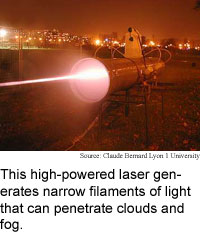Winter wrote:I'm afraid that doesn't really help very much -- we already have particle beams, lasers, railguns and intelligent projectiles in the game bible. For variety's sake, what we'd like is a different concept that's also realistically workable.
Weapons are built for a purpose.
Railguns and conventional guns are used because of their simplicity. I should note that the top possible projectile speed for both is about the same, based on the theoretical limits of chemical propulsion and simple rail ablation and friction.
Most armies will consider these, with a wide variety of ammunition types, to be their stock weapons. In my own setting, they are designed to fire a special type of encased explosive round which detonates or otherwise triggers when it experiences pressure around its circumference - normal needler rounds will simply fly through the target and leave them rather functional.
Laser weapons need to be tuned to the atmosphere they're used in. They might also become a staple, if they're simplified enough along with energy storage, primarily as a weapon you simply can't dodge, but also, if attuned to the right wavelengths, a good warning weapon - they ionize ('plasmify') the air and become visible. This is being researched now for use as a wireless taser.
For getting past the speed limits of railguns and conventional weapons, you would use a coilgun, though it's more complex.
Essentially, your 'plasma weapon' is just a railgun with an ineffectual explosive round, as described.
You may want to expand particle beams - they have different uses. A neutron beam, for instance, is a great way to mess up sensitive systems deep within a target, unless they have significant amounts of shielding - beryllium would be standard on anything that needs maneuverability.
I guess that a projectile generating plasma at the target is probably the best option at this. Can anyone give some info as to what would be the best way to go about this, with composition of the projectile and required tech, etc.?
A thermite-style mix involving a fluorine compound instead of oxygen comes to mind. The trick into making a proper compound like this (with say, a cesium compound) would of course be getting a slow burn a la thermite.
It's important to understand it fills a strategic / tactical need, as a blinder and dealing with certain types of armor. See part about triggering under pressure above.
Plasma is primarily a defensive tool in my setting, really.
As an aside, what's the skinny on sonic weaponry? Any chance of using sound as a lethal battlefield weapon at any point in the future? What form would it take and what are the power scales?
Humans and other biological organisms are very resistant to concussive damage. I'm sure it's possible, but the purpose of such weaponry would be more suited to bringing down sensitive emplacements, for the energy expended. There was a rumor of a Russian project which was designed to wreck the electronics in an American carrier tower, but I'm not certain if it was ever successful.







